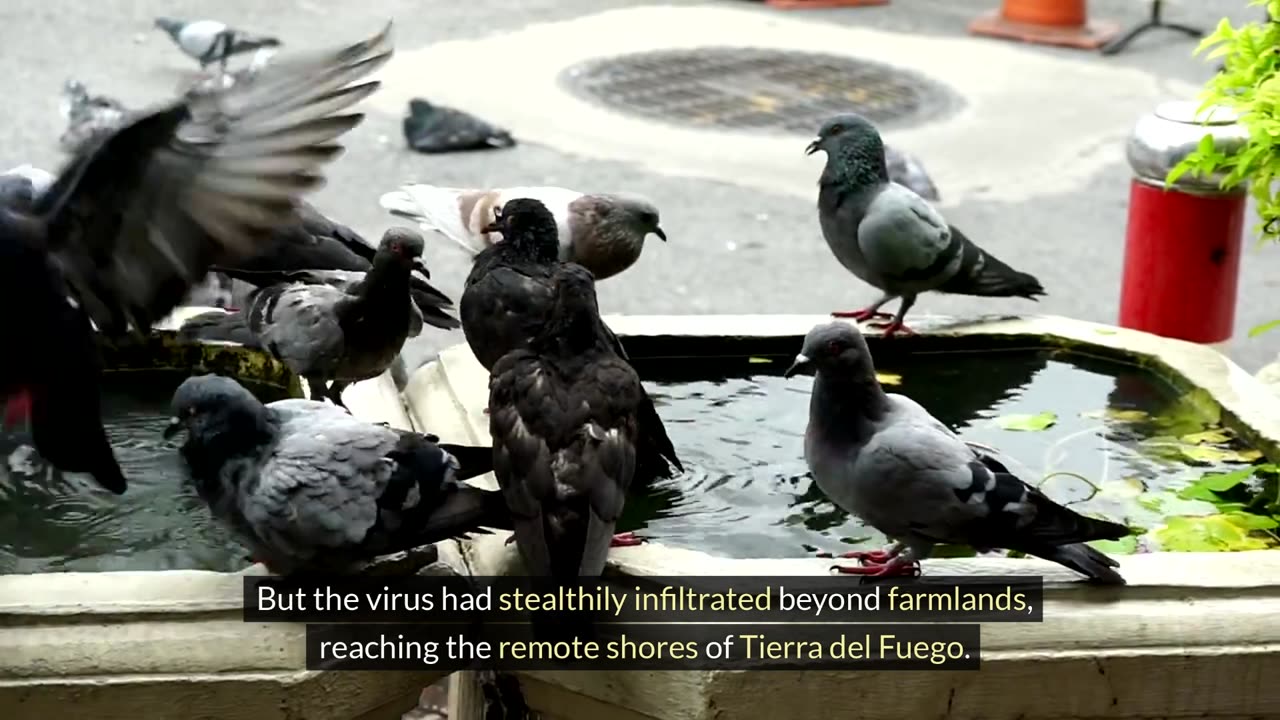Premium Only Content

Avian Influenza's Ominous Leap into Marine Mammals**
Imagine a world where the boundaries between species blur, and diseases once confined to birds now threaten marine mammals. In a groundbreaking study, researchers have uncovered the alarming spread of highly pathogenic avian influenza (HPAI) among elephant seals in Argentina, marking the first known instance of the virus crossing into mammals on a transnational scale. Join us as we unravel the chilling implications of this unprecedented outbreak and explore the urgent need for vigilance and action in the face of a looming threat.
* 1: The Unfolding Crisis**
In 2023, the world bore witness to a startling phenomenon: the emergence of HPAI H5N1 among elephant seals in Argentina. This marked a significant shift in the trajectory of the virus, which had previously been confined to avian populations. As the outbreak spread rapidly across different pinniped species and countries, scientists raced to unravel the mysteries of this deadly pathogen's newfound adaptability.
**Section 2: From Birds to Mammals: A Dangerous Evolution**
Genomic analysis revealed a troubling development—the virus was evolving into distinct avian and marine mammal clades, a phenomenon never before observed. This evolutionary leap poses a dire threat, as the virus becomes increasingly adept at infecting mammals, including humans. The implications of this rapid adaptation are profound and demand immediate attention from the global community.
3: The Toll of the Outbreak**
The toll of the outbreak was devastating, with thousands of elephant seals succumbing to the virus in a matter of months. The once-thriving breeding colonies now lay decimated, their populations ravaged by an invisible enemy. As researchers grappled with the scale of the tragedy, they were confronted with the harsh reality of the virus's impact on both wildlife and ecosystems.
4: The Urgent Call to Action**
In the face of this unprecedented threat, there is no time to waste. Vigilance and proactive measures are essential to contain the spread of the virus and mitigate its impact. Enhanced surveillance, robust research efforts, and international collaboration are critical components of an effective response strategy. By working together, we can confront this looming crisis and safeguard the health of our planet and its inhabitants.
5: Looking Ahead: Hope Amidst Uncertainty**
While the challenges posed by HPAI H5N1 are daunting, there is reason for hope. Through concerted efforts and unwavering determination, we can stem the tide of the outbreak and prevent further devastation. By raising awareness, fostering cooperation, and advocating for meaningful change, we can build a brighter future for all species. Together, we can overcome this silent threat and emerge stronger, more resilient, and more united than ever before.
As we reflect on the gravity of the situation, we must recognize the importance of collective action. If you found this video informative, please like, share, and subscribe to our channel. By spreading awareness and mobilizing support, we can amplify our impact and drive positive change. Together, we can turn the tide against avian influenza and protect the health and well-being of our planet. Thank you for watching, and remember to stay vigilant in the face of emerging threats.
-
 12:19
12:19
Tundra Tactical
12 hours ago $11.79 earnedDaniel Penny Beats Charges in NYC Subway Killing
49.1K10 -
 29:53
29:53
MYLUNCHBREAK CHANNEL PAGE
1 day agoUnder The Necropolis - Pt 1
141K45 -
 2:00:10
2:00:10
Bare Knuckle Fighting Championship
3 days agoCountdown to BKFC on DAZN HOLLYWOOD & FREE LIVE FIGHTS!
51.6K3 -
 2:53:01
2:53:01
Jewels Jones Live ®
1 day agoA MAGA-NIFICENT YEAR | A Political Rendezvous - Ep. 103
138K33 -
 29:54
29:54
Michael Franzese
15 hours agoCan Trump accomplish everything he promised? Piers Morgan Article Breakdown
127K54 -
 2:08:19
2:08:19
Tactical Advisor
19 hours agoThe Vault Room Podcast 006 | Farwell 2024 New Plans for 2025
194K11 -
 34:12
34:12
inspirePlay
1 day ago $5.84 earned🏆 The Grid Championship 2024 – Cass Meyer vs. Kelly Rudney | Epic Battle for Long Drive Glory!
92.6K8 -
 17:50
17:50
BlackDiamondGunsandGear
17 hours ago $3.17 earnedTeach Me How to Build an AR-15
66.4K6 -
 9:11
9:11
Space Ice
1 day agoFatman - Greatest Santa Claus Fighting Hitmen Movie Of Mel Gibson's Career - Best Movie Ever
123K49 -
 42:38
42:38
Brewzle
1 day agoI Spent Too Much Money Bourbon Hunting In Kentucky
83.6K13